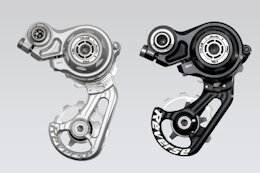Data Federation in SAP Datasphere Data federation is a powerful data management strategy that enables seamless integration and efficient utilization of disparate data sources. In this approach, we don’t consolidate information or eliminate other sources; instead, we leave the data where it resides and use virtualization techniques to provide a unified view 1. How It Works: o Data federation doesn’t move data around; it keeps it in its original location. o Virtualization magic happens: We create a unified view of data from various systems, making it appear as if it’s all in one place. o Federated queries allow easy access to information across different platforms. 2. Why It Matters: o Data Explosion: With data multiplying like rabbits, we need efficient ways to manage it. o Better Analytics: Federated systems enhance data integration and analytics. o Customer Interactions: Businesses can provide relevant info by connecting diverse sources without redundant copies. 3. Not Data Consolidation: o Data federation ≠ data consolidation. o Federated architecture respects autonomy while integrating data sources. Benefits SAP Datasphere SAP Datasphere, a comprehensive data service built on SAP Business Technology Platform (SAP BTP) that enables every data professional to deliver seamless and scalable access to mission-critical business data. With the unified experience of SAP Datasphere for data integration, data cataloging, semantic modeling, data warehousing, data federation, and data virtualization, data professionals can now easily distribute mission-critical business data — with business context and logic preserved — across their organization’s data landscape Data Federation in Datasphere – Virtually access and store data from anywhere Designed to enable seamless integration and real-time access to data across various sources • It employs a virtual database approach, allowing users to create virtual tables that aggregate data from different sources without duplicating it. • SAP Datasphere’s data federation architecture is supported by tools like the SAP HANA smart data integration data provisioning agent and adapters like the MSSQL Log Reader Adapter • These tools help in federating data from platforms such as Azure Synapse into SAP Datasphere, thus leveraging its analytical capabilities through SAP Analytics Cloud • Data Federation avoids extracting the data from SAP S/4HANA • Remote Table Federation: First, you can federate data, where you leave the data in the source system and access it remotely in real-time • Model Transfer approach: BW/4HANA rich metadata is imported from BW/4HANA to Datasphere, while the data is being virtually accessed • The architecture also includes the Federated-ML or FedML library, which addresses challenges of data migration and replication. It intelligently sources data in real-time from data storages for building, training, and deploying machine learning models on hyperscalers without the need to replicate or migrate data. Conclusion Overall, SAP Datasphere’s data federation architecture harmonizes mission-critical data throughout the organization, providing a unified service for data integration, cataloging, semantic modeling, and data warehousing, thereby enabling a business data fabric architecture.
Data Federation in SAP Datasphere Data federation is a powerful data management strategy that enables seamless integration and efficient utilization of disparate data sources. In this approach, we don’t consolidate information or eliminate other sources; instead, we leave the data where it resides and use virtualization techniques to provide a unified view 1. How It Works: o Data federation doesn’t move data around; it keeps it in its original location. o Virtualization magic happens: We create a unified view of data from various systems, making it appear as if it’s all in one place. o Federated queries allow easy access to information across different platforms. 2. Why It Matters: o Data Explosion: With data multiplying like rabbits, we need efficient ways to manage it. o Better Analytics: Federated systems enhance data integration and analytics. o Customer Interactions: Businesses can provide relevant info by connecting diverse sources without redundant copies. 3. Not Data Consolidation: o Data federation ≠ data consolidation. o Federated architecture respects autonomy while integrating data sources. Benefits SAP Datasphere SAP Datasphere, a comprehensive data service built on SAP Business Technology Platform (SAP BTP) that enables every data professional to deliver seamless and scalable access to mission-critical business data. With the unified experience of SAP Datasphere for data integration, data cataloging, semantic modeling, data warehousing, data federation, and data virtualization, data professionals can now easily distribute mission-critical business data — with business context and logic preserved — across their organization’s data landscape Data Federation in Datasphere – Virtually access and store data from anywhere Designed to enable seamless integration and real-time access to data across various sources • It employs a virtual database approach, allowing users to create virtual tables that aggregate data from different sources without duplicating it. • SAP Datasphere’s data federation architecture is supported by tools like the SAP HANA smart data integration data provisioning agent and adapters like the MSSQL Log Reader Adapter • These tools help in federating data from platforms such as Azure Synapse into SAP Datasphere, thus leveraging its analytical capabilities through SAP Analytics Cloud • Data Federation avoids extracting the data from SAP S/4HANA • Remote Table Federation: First, you can federate data, where you leave the data in the source system and access it remotely in real-time • Model Transfer approach: BW/4HANA rich metadata is imported from BW/4HANA to Datasphere, while the data is being virtually accessed • The architecture also includes the Federated-ML or FedML library, which addresses challenges of data migration and replication. It intelligently sources data in real-time from data storages for building, training, and deploying machine learning models on hyperscalers without the need to replicate or migrate data. Conclusion Overall, SAP Datasphere’s data federation architecture harmonizes mission-critical data throughout the organization, providing a unified service for data integration, cataloging, semantic modeling, and data warehousing, thereby enabling a business data fabric architecture. Read More Technology Blogs by Members articles
#SAP
#SAPTechnologyblog












+ There are no comments
Add yours